South Africa Diabetes Drugs and Devices Market Size
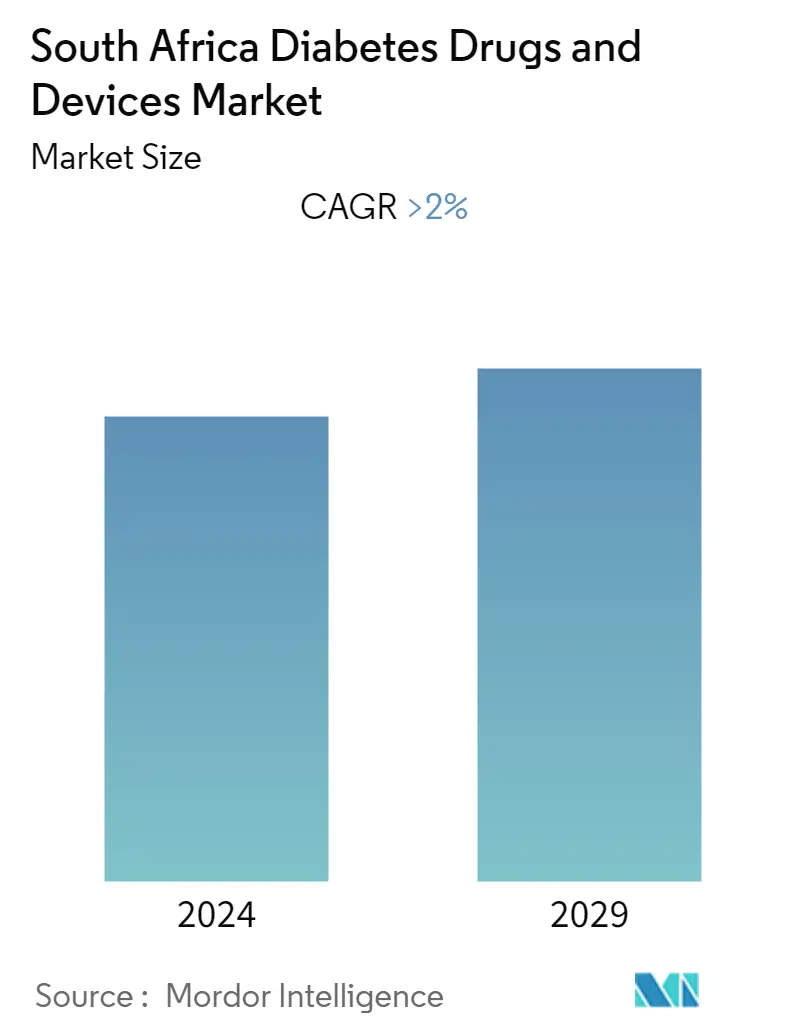
| Study Period | 2018 - 2029 |
| Base Year For Estimation | 2023 |
| Forecast Data Period | 2024 - 2029 |
| Historical Data Period | 2018 - 2022 |
| CAGR | 2.00 % |
Major Players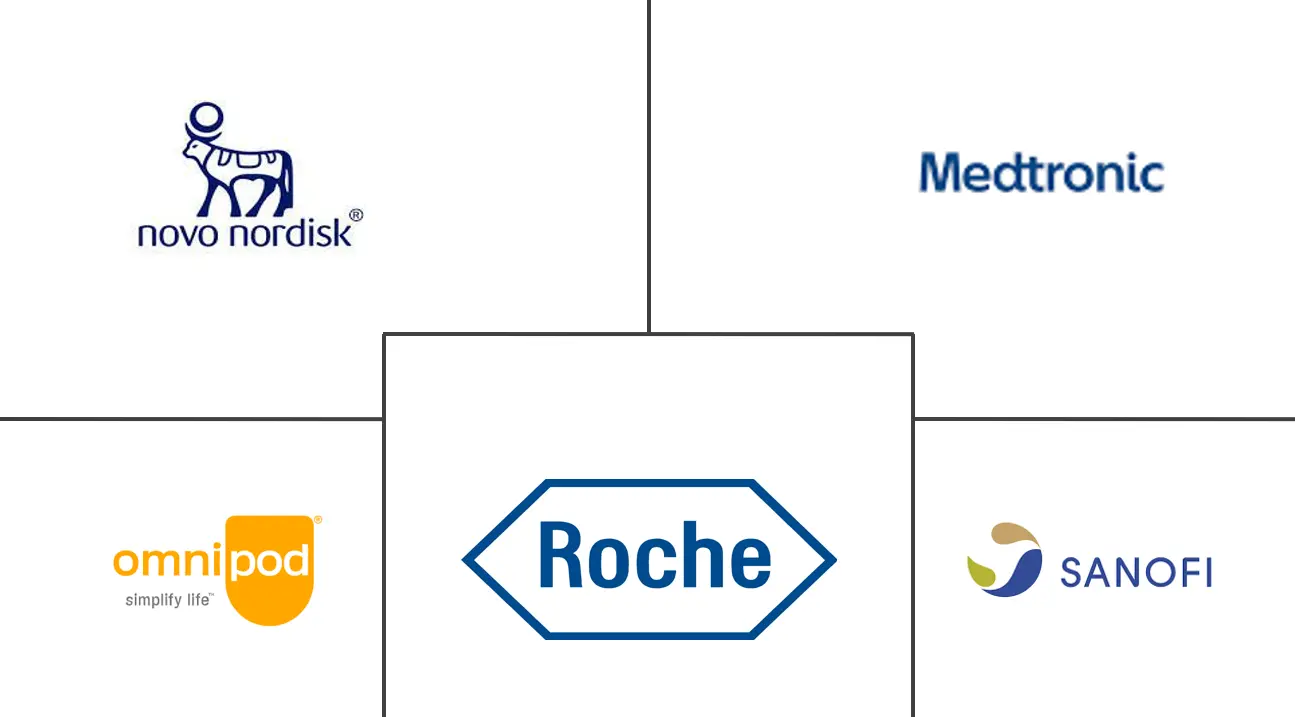
*Disclaimer: Major Players sorted in no particular order |
South Africa Diabetes Drugs and Devices Market Analysis
South Africa's diabetes care drugs and devices market size was estimated at USD 0.47 billion in the current year. The market is expected to reach USD 0.55 billion in five years, registering a CAGR of more than 2% during the forecast period.
The COVID-19 pandemic positively impacted the Diabetes Drugs market growth in South Africa. Patients with diabetes infected with COVID-19 may journey to improved blood glucose, abnormal glucose variability, and diabetic complications. The prevalence of diabetes in human beings with COVID-19 induced a good-sized increase in severity and mortality of COVID-19 in people with either kind 1 (T1DM) or kind two diabetes mellitus (T2DM), particularly in affiliation with terrible glycemic control. While new-onset hyperglycemia and new-onset diabetes (both T1DM and T2DM) have been increasingly diagnosed in the context of COVID-19 and have been associated with worse outcomes. A patient's blood glucose must be monitored and managed regularly to avoid aggravation.
According to IDF Diabetes Atlas 2022, one in nine adults in South Africa live with diabetes. The principal analysis for people living with diabetes is imbalances in blood glucose levels, which do not comply with the general blood glucose levels. The customary lab diagnostic tests can only help to diagnose the sickness by physicians. Patients with more fluctuations in glucose stages want to get it checked daily. Patients administering insulin must frequently test their blood glucose stages, adjust their insulin doses, or change the medication if necessary. The rate of newly diagnosed Type 1 and Type 2 diabetes cases is considered to increase, normally due to obesity, unhealthy diet, and bodily inactivity. The swiftly increasing incidence and incidence of diabetic sufferers and healthcare expenditure in developed international locations are warning signs of the growing usage of diabetic care products. Moreover, the growing adoption of insulin transport units and the rising incidence of diabetes is riding the market growth. Leading producers are focusing on technological innovations and developing superior products to acquire a sizeable market share.
Therefore, owing to the aforementioned factors, the studied market is anticipated to grow over the analysis period.
South Africa Diabetes Drugs and Devices Market Trends
The continuous Glucose Monitoring Segment is Expected to Witness the Highest Growth Rate Over the Forecast Period
The continuous blood glucose monitoring segment is expected to register a CAGR of over 11.4% during the forecast period.
A continuous blood glucose monitor is an automatic blood glucose monitoring system consisting of a small device worn on the body and attached with an adhesive patch. The sensor portion of the device includes a cannula inserted into the top layer of the skin and uses a sample of interstitial fluid to check blood sugar levels. The sensor is connected to a transmitter that can transmit data wirelessly to a special mobile receiving device or smartphone. For diabetics, their caregivers, and the community, her use of CGM is beneficial in managing blood sugar and insulin levels to maintain good health. CGM makes blood sugar control much more accessible by reducing interruptions and allowing for better sleep. It also improves the mental health of patients and caregivers by reducing the overall mental burden associated with diabetes treatment, thereby improving the market prospects in the coming years.
Diabetes South Africa (DSA), Endocrinology, Metabolism and Diabetes Association of South Africa (SEMDSA), and Diabetic Youth are various organizations in South Africa dedicated to helping people with diabetes. DSA is a non-profit organization that mobilises volunteers to seek better care for people with diabetes. The focus is on educating citizens and lobbying governments for better facilities and cheaper healthcare. In addition, SEMDSA studies the genetic causes and causes of diabetes. The organization also promotes high standards of care and facilitates access to medicines nationwide. These organizations encourage increased allocation of budgets to fund all aspects of diabetes care, limit out-of-pocket costs, and support the healthcare system, the organization responsible for reimbursement, to prevent increased patient spending. They are encouraged to provide a system for better coordination with the Council.
In addition, current continuous blood glucose monitors can display blood glucose trends by downloading data or providing real-time images of blood glucose levels via the receiver's display. The emergence of new technologies such as cell phone integration will likely make continuous blood glucose monitoring devices cheaper, boosting the field.
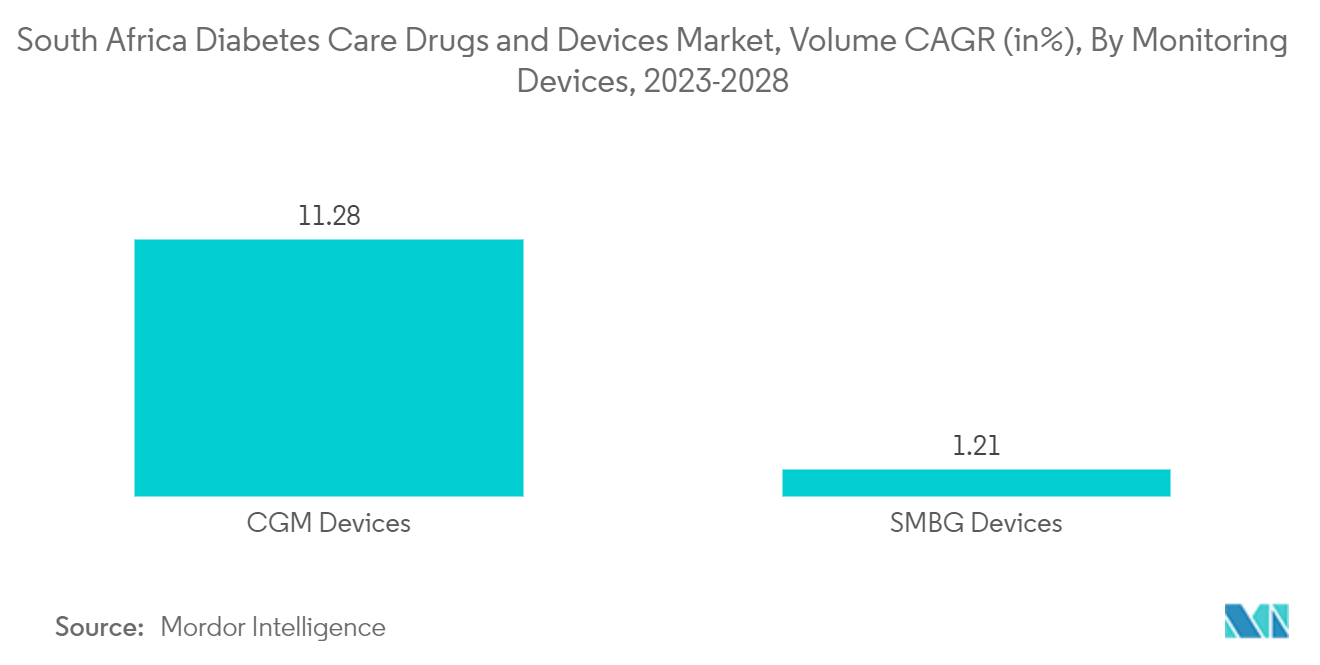
Rising diabetes prevalence
Rapid urbanization, characterized by unhealthy high-energy diets and lack of exercise, has contributed to the growing epidemic of obesity. This is especially true for overweight or obese South African women. Obesity is a major cause of the T2DM epidemic. In South Africa, obesity is estimated to account for 87% of T2DM cases. In addition, these studies reported higher rates of newly diagnosed diabetes and glucose intolerance, which are associated with her increased annual risk of developing T2DM.
One of the main goals of diabetes management is to maintain blood glucose levels within specific target ranges, which can be achieved through activity, lifestyle, and a balanced diet that includes diabetes medications. Blood glucose monitoring readings provide the information needed to determine the optimal diabetes management strategy. How often people with diabetes use insulin to check their blood sugar levels depends on several factors. Her type 2 diabetic, who does not use insulin, may not need to check her blood sugar regularly. However, structured self-monitoring can be helpful.
One of the most effective ways to reduce diabetes prevalence in South Africa is to educate the public and encourage sound decision-making. South Africa is currently working towards this goal. A recent preventative measure the South African government took was introducing a sugar tax. By imposing high prices on sugary drinks and foods, governments are fighting obesity and helping citizens make more informed choices. South Africa has launched a temporary Diabetes Prevention Program (DPP). The DPP aims to integrate interventions into culturally relevant contexts through household surveys and group meetings with individuals at risk.
Therefore, the market studied is expected to grow during the analysis period due to the increasing penetration rate and the abovementioned factors.
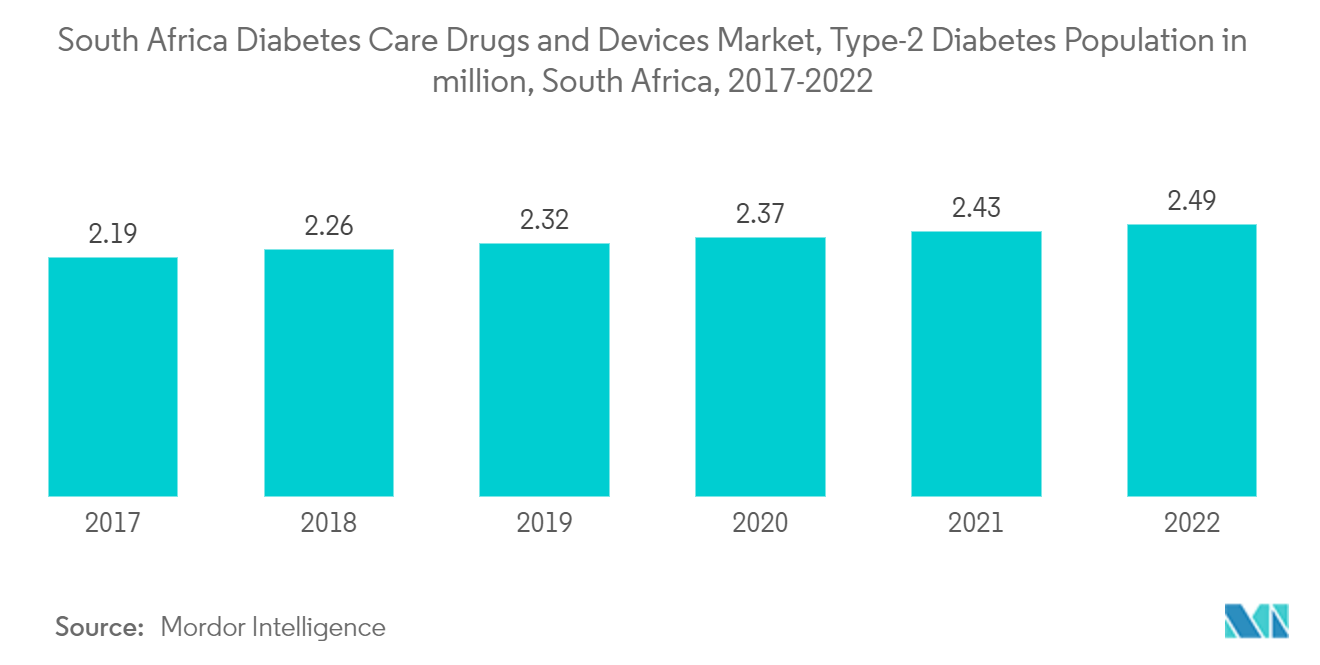
South Africa Diabetes Drugs and Devices Industry Overview
In order to survive in the market, manufacturers have constantly innovated. Large companies like Abbott and Medtronic have made numerous mergers, acquisitions and partnerships to gain market dominance while adhering to organic growth strategies. Manufacturers of insulin dosing devices spend a lot of money in R&D.
South Africa Diabetes Drugs and Devices Market Leaders
-
Medtronics
-
Roche
-
NovoNordisk
-
Sanofi
-
Omnipod
*Disclaimer: Major Players sorted in no particular order
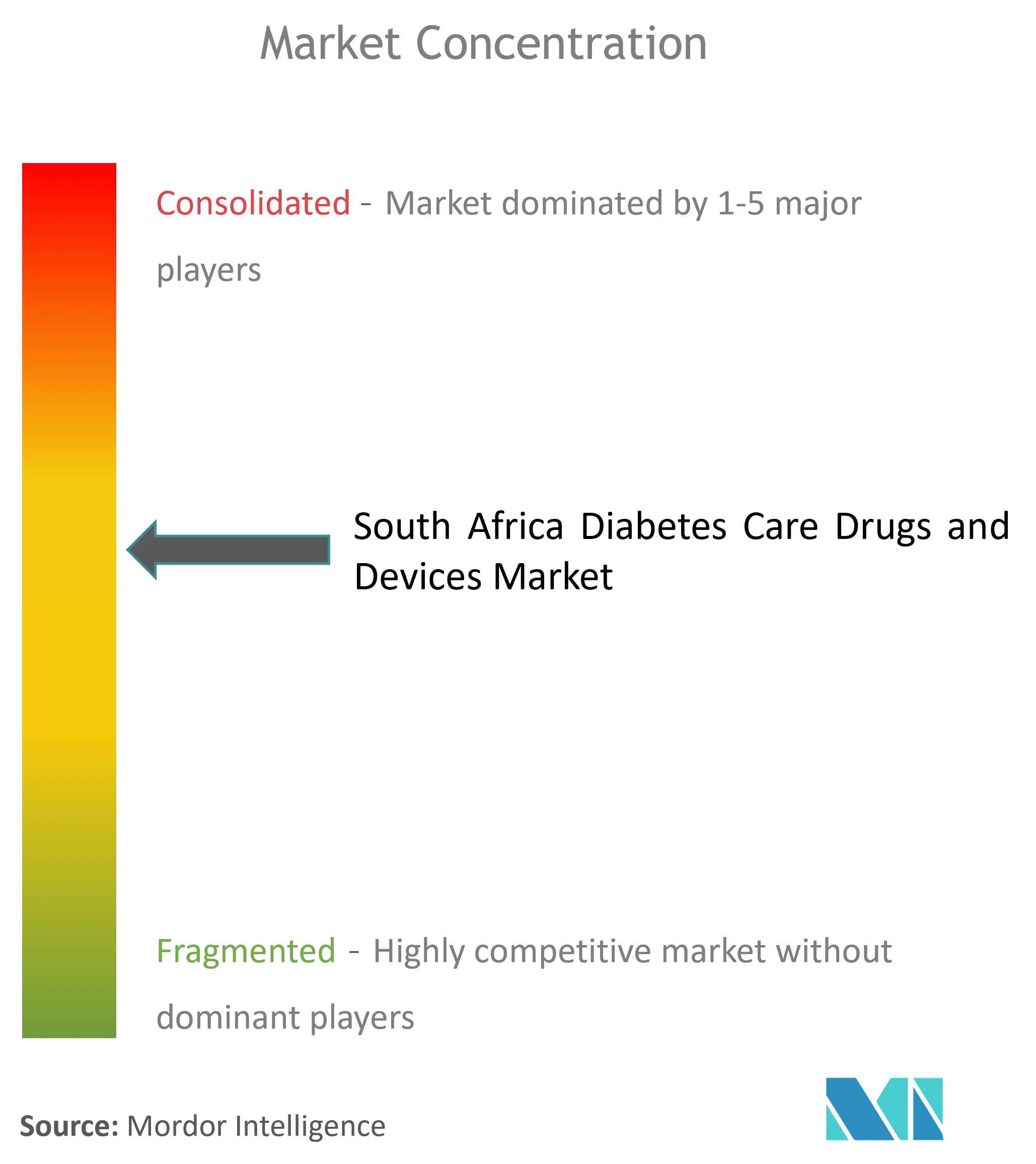
South Africa Diabetes Drugs and Devices Market News
- October 2022: Novo Nordisk announced headline results from the ONWARDS 5 phase 3a trial with once-weekly insulin icodec in people with type 2 diabetes. The ONWARDS 5 trial was a 52-week, open-label efficacy and safety treat-to-target trial investigating once-weekly insulin versus once-daily basal insulin (insulin degludec or insulin glargine U100/U300).
- September 2022: Abbott announced new data from the Real-World Evidence of the FreeStyle Libre study showing that using FreeStyle Libre, a continuous glucose monitoring system, significantly reduced the rate of hospitalizations. It is due to acute diabetes events for people with Type 2 diabetes on once-daily (basal) insulin therapy.
Table of Contents
1. INTRODUCTION
- 1.1 Study Assumptions and Market Definition
- 1.2 Scope of the Study
2. RESEARCH METHODOLOGY
3. EXECUTIVE SUMMARY
4. MARKET DYNAMICS
- 4.1 Market Overview
-
4.2 Market Dynamics
- 4.2.1 Market Drivers
- 4.2.2 Market Restraints
-
4.3 Industry Attractiveness - Porter's Five Forces Analysis
- 4.3.1 Bargaining Power of Suppliers
- 4.3.2 Bargaining Power of Consumers
- 4.3.3 Threat of New Entrants
- 4.3.4 Threat of Substitute Products and Services
- 4.3.5 Intensity of Competitive Rivalry
5. Market Segmentation (Market Size by Volume - USD)
-
5.1 Devices
- 5.1.1 Monitoring Devices
- 5.1.1.1 Self-monitoring Blood Glucose Devices
- 5.1.1.2 Continuous Blood Glucose Monitoring
- 5.1.2 Management Devices
- 5.1.2.1 Insulin Pump
- 5.1.2.2 Insulin Syringes
- 5.1.2.3 Insulin Cartridges
- 5.1.2.4 Disposable Pens
-
5.2 Drugs
- 5.2.1 Oral Anti-Diabetes Drugs
- 5.2.2 Insulin Drugs
- 5.2.3 Combination Drugs
- 5.2.4 Non-Insulin Injectable Drugs
6. Market Indicators
- 6.1 Type-1 Diabetes Population
- 6.2 Type-2 Diabetes Population
7. COMPETITIVE LANDSCAPE
-
7.1 Company Profiles
- 7.1.1 Novo Nordisk
- 7.1.2 Medtronic
- 7.1.3 Insulet
- 7.1.4 Tandem
- 7.1.5 Ypsomed
- 7.1.6 Novartis
- 7.1.7 Sanofi
- 7.1.8 Eli Lilly
- 7.1.9 Abbottt
- 7.1.10 Roche
- 7.1.11 Astrazeneca
- 7.1.12 Dexcom
- 7.1.13 Pfizer
- *List Not Exhaustive
- 7.2 Company Share Analysis
8. MARKET OPPORTUNITIES AND FUTURE TRENDS
** Subject To AvailablitySouth Africa Diabetes Drugs and Devices Industry Segmentation
Patients with type 1 diabetes need to be given insulin because their pancreas cannot process it. To control blood glucose levels, insulin must be given various times daily. Some individuals with type 2 diabetes also have to take antidiabetic drugs. These drugs include diabetes medications and injections, for example, insulin. The South Africa diabetes care drugs and devices market is segmented by drugs (insulin, oral anti-diabetic drugs, non-insulin injectable drugs, and combination drugs) and devices (management devices such as insulin pumps, insulin pens, syringes, cartridges, and jet injectors, and monitoring devices including self-monitoring blood and continuous glucose monitoring). The report offers the value (in USD) and volume (in unit) for the above segments.
| Devices | Monitoring Devices | Self-monitoring Blood Glucose Devices |
| Continuous Blood Glucose Monitoring | ||
| Devices | Management Devices | Insulin Pump |
| Insulin Syringes | ||
| Insulin Cartridges | ||
| Disposable Pens | ||
| Drugs | Oral Anti-Diabetes Drugs | |
| Insulin Drugs | ||
| Combination Drugs | ||
| Non-Insulin Injectable Drugs |
Frequently Asked Questions
What is the current South Africa Diabetes Drugs and Devices Market size?
The South Africa Diabetes Drugs and Devices Market is projected to register a CAGR of greater than 2% during the forecast period (2024-2029)
Who are the key players in South Africa Diabetes Drugs and Devices Market?
Medtronics, Roche, NovoNordisk, Sanofi and Omnipod are the major companies operating in the South Africa Diabetes Drugs and Devices Market.
What years does this South Africa Diabetes Drugs and Devices Market cover?
The report covers the South Africa Diabetes Drugs and Devices Market historical market size for years: 2018, 2019, 2020, 2021, 2022 and 2023. The report also forecasts the South Africa Diabetes Drugs and Devices Market size for years: 2024, 2025, 2026, 2027, 2028 and 2029.
South Africa Diabetes Drugs and Devices Industry Report
Statistics for the 2024 South Africa Diabetes Drugs and Devices market share, size and revenue growth rate, created by Mordor Intelligence™ Industry Reports. South Africa Diabetes Drugs and Devices analysis includes a market forecast outlook to for 2024 to 2029 and historical overview. Get a sample of this industry analysis as a free report PDF download.



